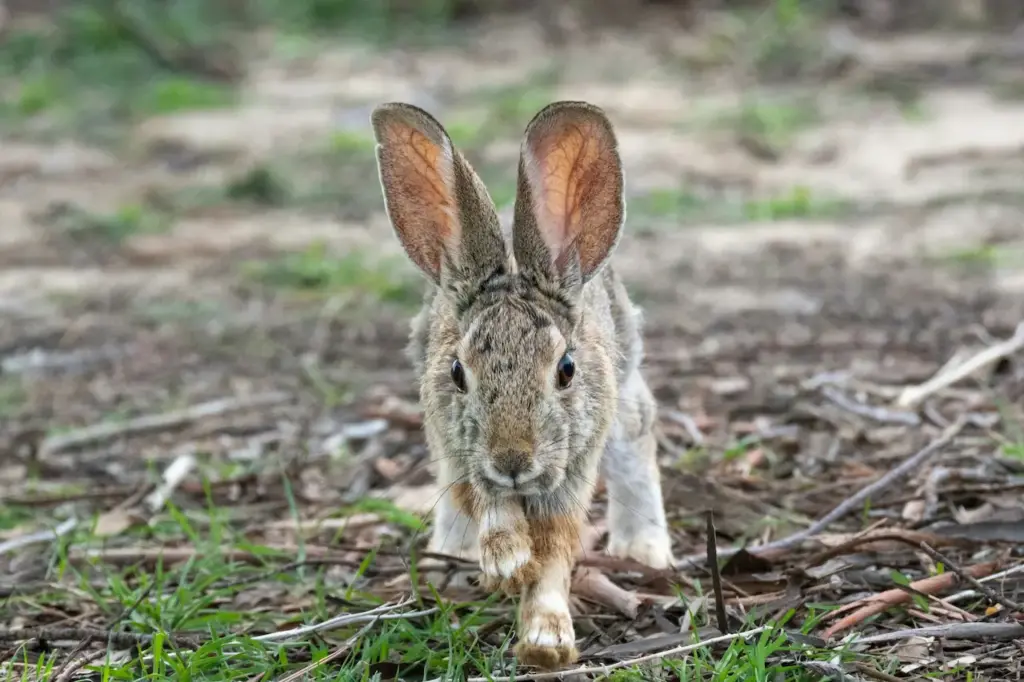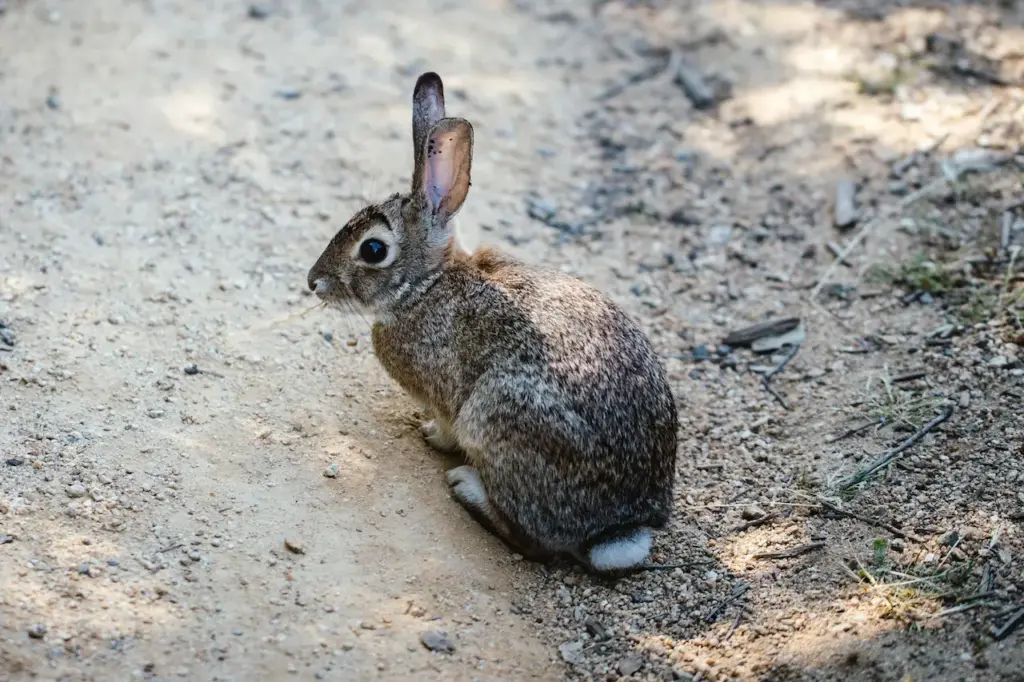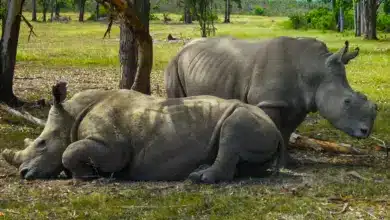Endangered Cottontail Rabbits?
Today's Wild Animal Facts: Endangered Cottontail Rabbits?
Drown me! Roast me! Hang me! Do whatever you please,” said Brer Rabbit. “Only please, Brer Fox, please don’t throw me into yonder briar patch.” –Brer Rabbit to Brer Fox

It is hard to believe, as well as sad to know, that the New England cottontail rabbit (Sylvilagus transitionalis) is vanishing from the Northeastern US. And the reason the once-plentiful rodent, so at home in briar patches, is disappearing on us is that those briar patches themselves are becoming scarce–as are all the dark tangles of native underbrush where Brer Rabbit likes to hide from Brer Fox and the rest of his natural enemies.
According to the US Fish and Wildlife Service, the cottontail, once common throughout New York and New England, now can no longer be found at all in Vermont. Elsewhere, it’s habitat has shrunk by 75 percent, and its numbers have declined so alarmingly that, while it is not yet on anyone’s top 10 endangered species list, it is seriously being considered for federal Endangered Species Act listing.
The USFWS says that in pre-colonial times, cottontails probably lived along the edges of rivers where flooding and beaver activity encouraged healthy thicket growth. After settlement, the bunnies found a new haven on abandoned New England farmland that began to grow brush instead of crops.

Now, however, the beavers are gone from most areas, the riverbanks are lined with human development, and maturing forests have been replacing the thickets that formerly covered the feral farmland, leaving the rabbit with nowhere to run. Meanwhile, the underbrush that does remain is often composed of non-native invasive plant species, which likely don’t provide enough food for the rabbits, says USFWS. Lastly, it is likely the cottontail also faces competition for food from an exploding whitetail deer population.
Nor is the New England cottontail the only long-eared rodent in trouble on US soil. The USFWS says the population of white-sided jackrabbits (Lepus callotis gaillardi), native to the grasslands of New Mexico, has fallen to around 150, making the animal a very strong ESA-listing candidate. The jackrabbit’s problems stem from habitat loss brought about by climate-change-induced drought, overgrazing of its range by cattle, and suppression of the wildfires that otherwise would fertilize and replenish the grasslands. — Paul Guernsey


